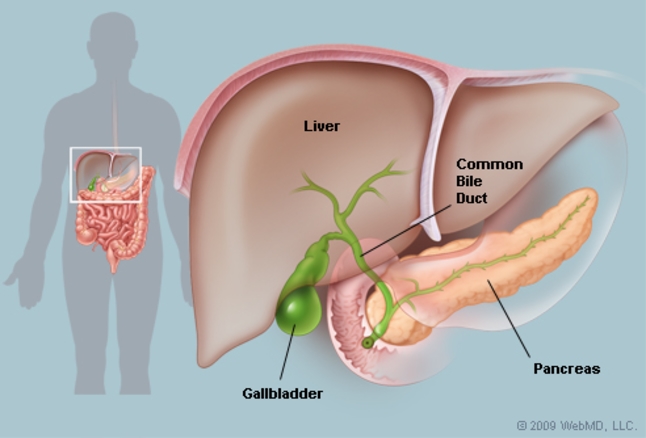



The dedicated Pawar Multispeciality Hospital is one of the best hospitals in Pune for Gall Bladder Surgery. The hospital conducts various Gall Bladder Surgeries.
In vertebrates, the gallbladder is a small hollow organ where bile is stored and concentrated before it is released into the small intestine. In humans, the pear-shaped gallbladder lies beneath the liver, although the structure and position of the gallbladder can vary significantly among animal species.
In some cases, the pain can begin to radiate to other areas of the body, including the back and chest. Nausea or vomiting: Nausea and vomiting are common symptoms of all types of gallbladder problems. But only chronic gallbladder disease may cause digestive problems, such as acid reflux, gas, nausea, andvomiting.
The gallbladder is a small pouch that sits just under the liver. The gallbladder stores bile produced by the liver. After meals, the gallbladder is empty and flat, like a deflated balloon. Before a meal, the gallbladder may be full of bile and about the size of a small pear.
In response to signals, the gallbladder squeezes stored bile into the small intestine through a series of tubes called ducts. Bile helps digest fats, but the gallbladder itself is not essential. Removing the gallbladder in an otherwise healthy individual typically causes no observable problems with health or digestion yet there may be a small risk of diarrhea and fat malabsorption.
Gallstones (cholelithiasis): For unclear reasons, substances in bile can crystallize in the gallbladder, forming gallstones. Common and usually harmless, gallstones can sometimes cause pain, nausea, or inflammation.
Cholecystitis:Infection of the gallbladder, often due to a gallstone in the gallbladder. Cholecystitis causes severe pain and fever, and can require surgery when infection continues or recurs.
Gallbladder cancer:Although rare, cancer can affect the gallbladder. It is difficult to diagnose and usually found at late stages when symptoms appear. Symptoms may resemble those of gallstones.
Gallstone pancreatitis: An impacted gallstone blocks the ducts that drain the pancreas. Inflammation of the pancreas results, a serious condition.
Abdominal ultrasound: a noninvasive test in which a probe on the skin bounces high-frequency sound waves off structures in the belly. Ultrasound is an excellent test for gallstones and to check the gallbladder wall.
Endoscopic retrograde cholangiopancreatography (ERCP): Using a flexible tube inserted through the mouth, through the stomach, and into the small intestine, a doctor can see through the tube and inject dye into the bile system ducts. Tiny surgical tools can be used to treat some gallstone conditions during ERCP.
Magnetic resonance cholangiopancreatography (MRCP): An MRI scanner provides high-resolution images of the bile ducts, pancreas, and gallbladder. MRCP images help guide further tests and treatments.
Endoscopic ultrasound: A tiny ultrasound probe on the end of a flexible tube is inserted through the mouth to the intestines. Endoscopic ultrasound can help detect choledocholithiasis and gallstone pancreatitis.
Abdominal X-ray: Although they may be used to look for other problems in the abdomen, X-rays generally cannot diagnose gallbladder disease. However, X-rays may be able to detect gallstones.
Your gallbladder is a pear-shaped organ that stores bile, the fluid that helps digest food. If it’s not working the way it should (or your bile gets out of balance), hard fragments start to form. These can be as small as a grain of rice or as big as a golf ball.
Gallstones don’t go away on their own. If they start to hurt or cause other symptoms, your doctor may decide to remove your gallbladder. This type of surgery is called a cholecystectomy. It’s one of the most common surgeries doctors perform.
About 80% of people who have gallstones will need surgery.
Doctors can remove your gallbladder in one of two ways:
Open surgery: During this procedure, your surgeon will make a 5- to 7-inch incision (cut) on your belly to take out your gallbladder. You’ll need open surgery if you have a bleeding disorder. You may also need it if you have severe gallbladder disease, are very overweight, or are in your last trimester of pregnancy.
Laparoscopic Cholecystectomy: Doctors also call this “keyhole surgery.” Your surgeon doesn’t make a big opening in your belly. Instead, he makes four small cuts. He inserts a very thin, flexible tube that contains a light and a tiny video camera into your belly. These help your surgeon see your gallbladder better. Next, he’ll insert special tools to remove the diseased organ.